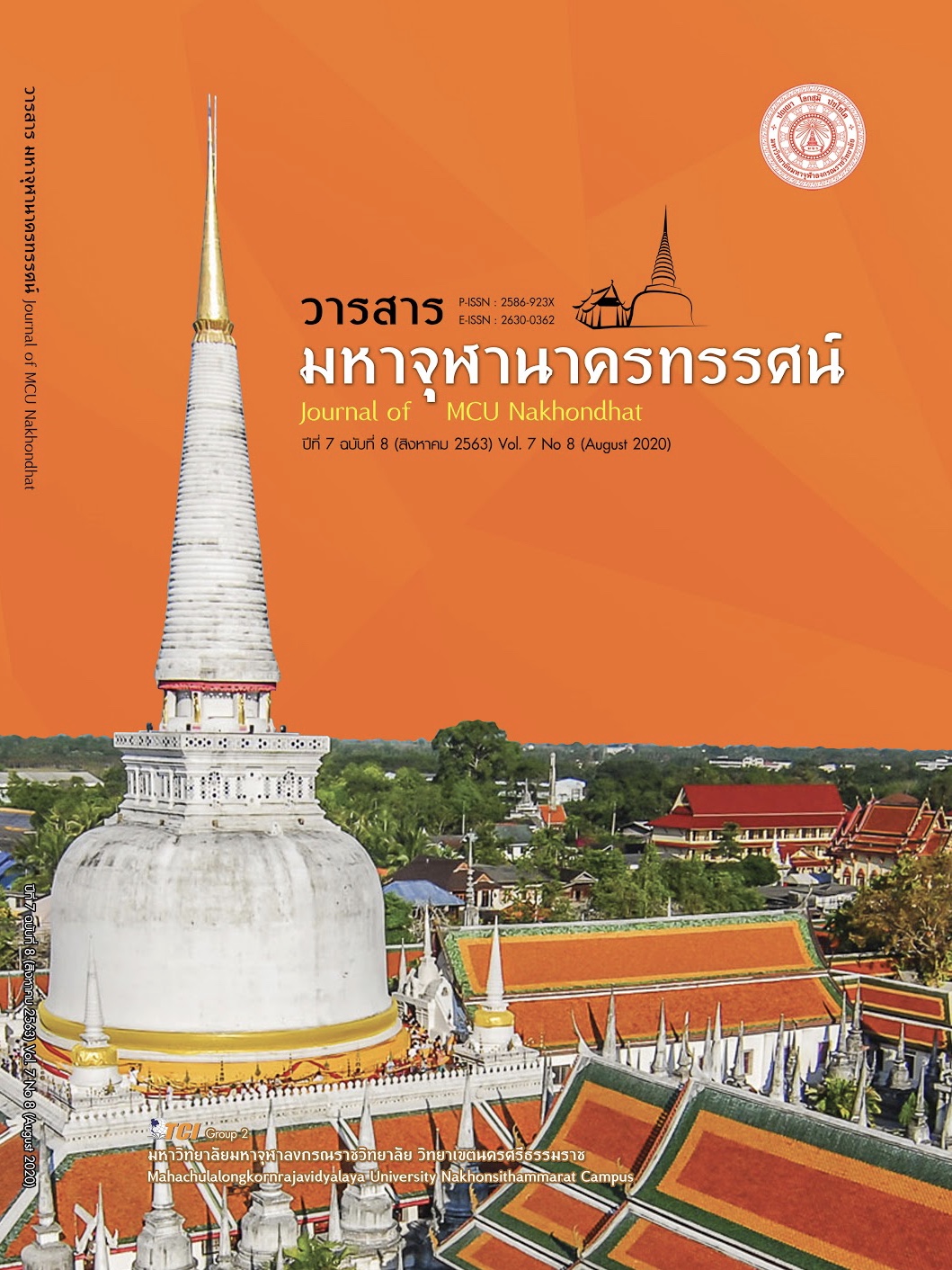DEFENDANT IN DRUG – RELATED OFFENSE: CASE STUDIES ON DRUG FOUND AS EVIDENCE IN THE HOUSE
Main Article Content
Abstract
This documentary research aimed to study the liability of a person who got involved in an offense committed at the crime scene. Also, this research intended to study the circumstances of the case in which the defendant was prosecuted due to drugs found as evidence in the house. This research was a documentary research by collecting and analyzing contents from text book, research articles, the Supreme Court decisions and the Internet. The findings revealed that a person who got involved in an offense committed by another offender in such a way that he physically took part in committing the offense, no matter how many degree he got involved in the entire offense, was convicted of being a co – offender. In addition, a person who got involved in an offense committed by another offender in such a way that he became an accomplice to the offender in perpetrating a crime, even though he did not physically take part in committing the offense, was convicted of being a co – offender, as if he did commit the offense himself. In the case of the drugs found in the house, both the house owner and his wife living in the same house, making a living together and hanging around together, were found guilty of drug co – possession with intent. However, just having knowledge of the drugs hidden in the house was insufficient to make the offender’s relative or friend staying in the same house guilty of drug co – possession with intent. The author would like to suggest people staying in a house where police are raiding during a drug search that they should not run away from the police, should not help the police find out where the drugs were hidden and should not help destroy the evidence (drugs). Lastly, they should try to distance themselves from the drugs as this act can lead them to affirm a plea of not guilty.
Article Details
References
คําพิพากษาศาลฎีกาที่ 980/2529. (2529).
คำพิพากษาศาลฎีกาที่ 1159/2542. (2542).
คำพิพากษาศาลฎีกาที่ 16219/2555. (2555).
คำพิพากษาศาลฎีกาที่ 2610 – 2611/2549. (2549).
คำพิพากษาศาลฎีกาที่ 321/2521. (2521).
คำพิพากษาศาลฎีกาที่ 3236/2522. (2522).
คำพิพากษาศาลฎีกาที่ 528/2538. (2538).
คำพิพากษาศาลฎีกาที่ 5487/2539. (2539).
คำพิพากษาศาลฎีกาที่ 559/2514. (2514).
คำพิพากษาศาลฎีกาที่ 56/2542. (2542).
คำพิพากษาศาลฎีกาที่ 5719/2544. (2544).
คำพิพากษาศาลฎีกาที่ 6792/2554. (2554).
คำพิพากษาศาลฎีกาที่ 9581/2555. (2555).
ชัยนเรศ วงศ์สายัณห์. (2556). การนําระบบลูกขุนมาใช้ในการพิจารณาคดีอาญาร้ายแรงในประเทศไทย. เรียกใช้เมื่อ 19 มิถุนายน 2563 จาก http://libdoc.dpu.ac.th/ thesis/148573.pdf
สมศักดิ์ เอี่ยมพลับใหญ่. (2559). การซักประเด็นข้อเท็จจริงคดียาเสพติด. (พิมพ์ครั้งที่ 5). กรุงเทพมหานคร: สำนักพิมพ์บัณฑิตอักษร.
สำนักงานป้องกันและปราบปรามยาเสพติด กระทรวงยุติธรรม. (2562). รายงานผลการดำเนินงานป้องกันและแก้ไขปัญหายาเสพติดประจำปีงบประมาณ 2562. เรียกใช้เมื่อ 1 พฤษภาคม 2563 จาก https://www.oncb.go.th/EBookLibrary/.pdf
BBC News. (2020). George Floyd: What we know about the officers charged over his death. Retrieved June 5, 2020, from https://www.bbc.com/news/ world–us–canada–52969205
Casetext. (2015). Conspiracy–Drug–Cases–Insufficient – Evidence. Retrieved June 5, 2020, from https://casetext.com/analysis/conspiracy–drug–cases– insufficient–


